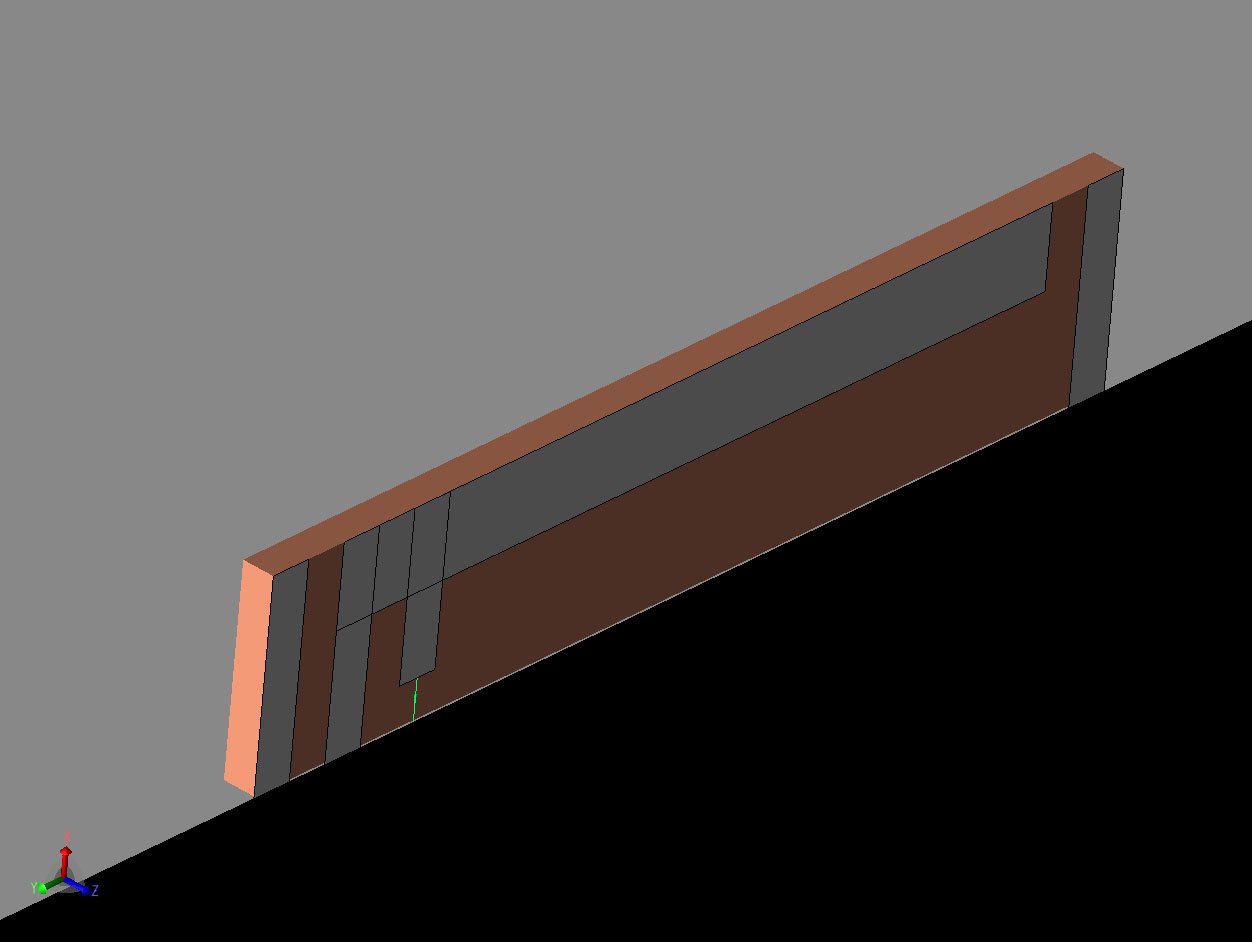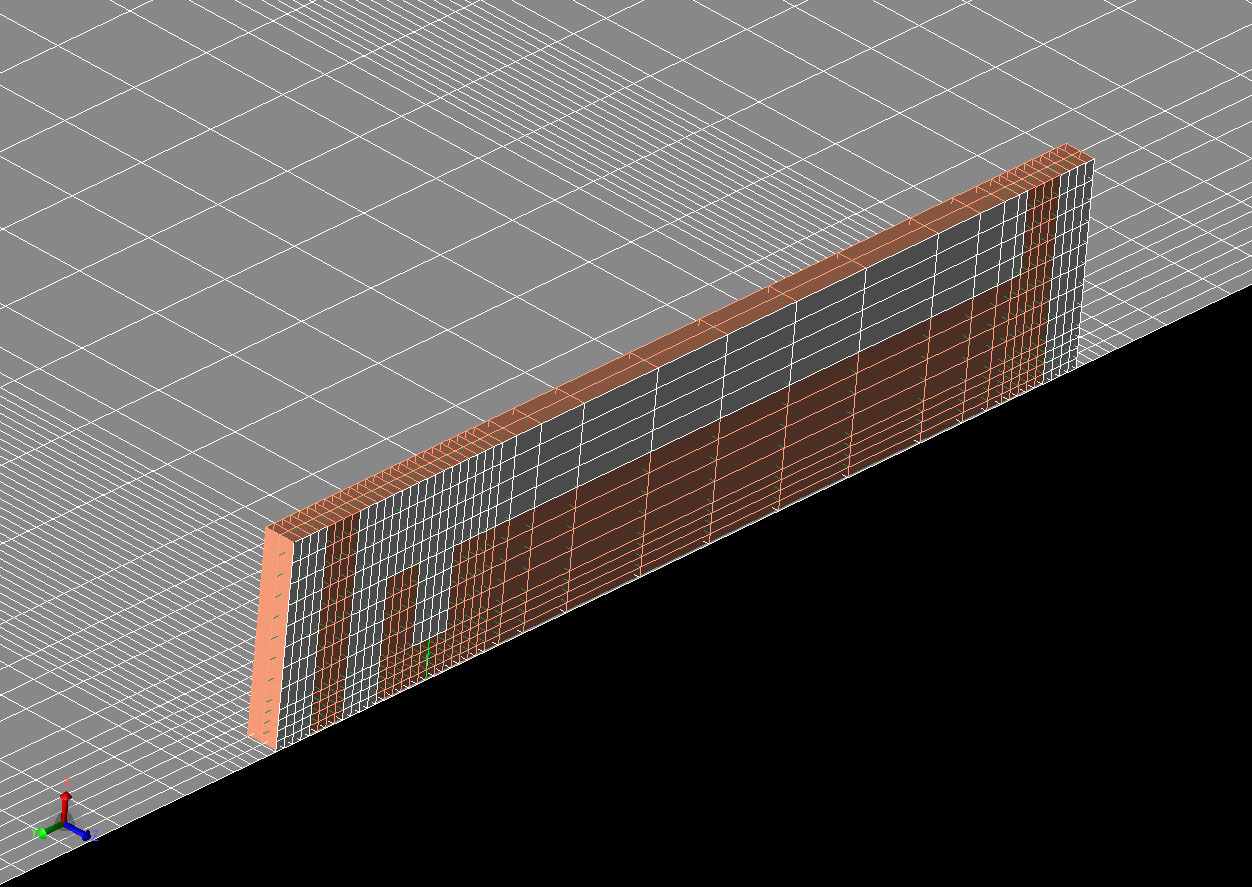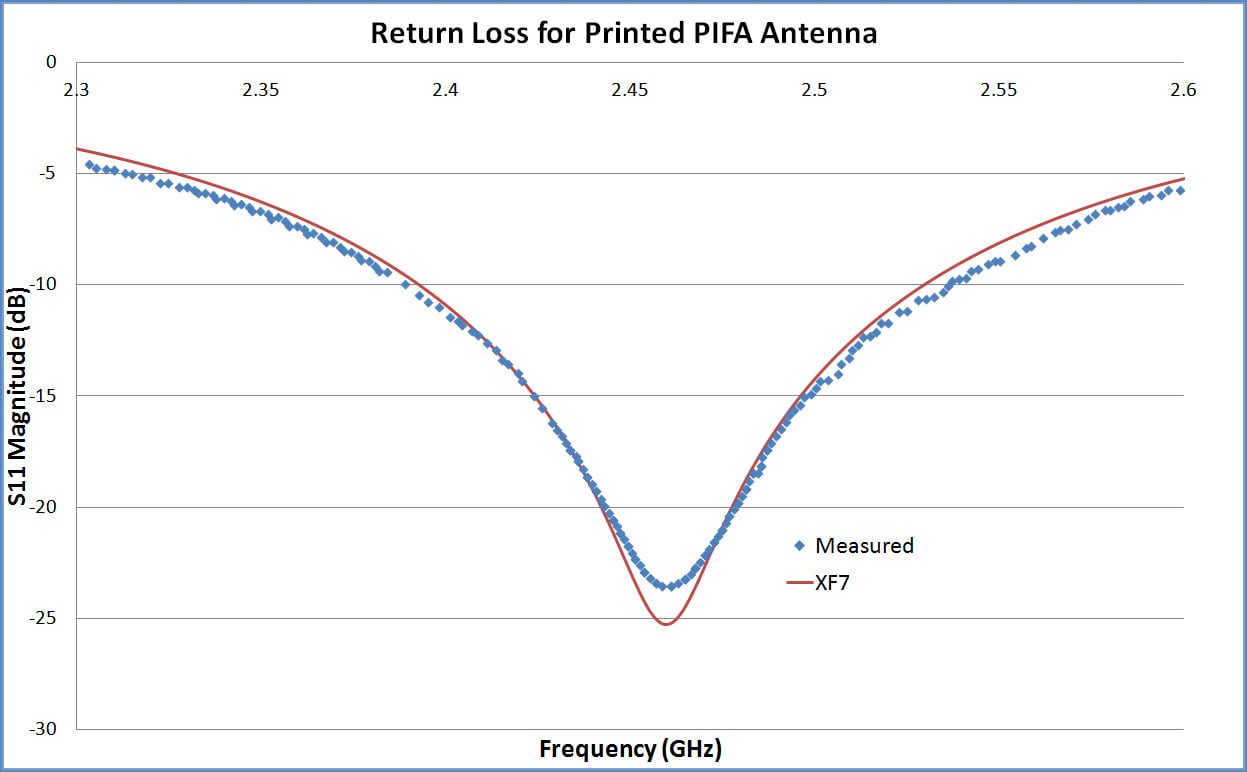シミュレーションにおけるプリントPIFAアンテナの検証データ
この例は、単純な平面逆Fアンテナ(PIFA)のリターンロスの測定データと比較したXFdtdの検証データを提供します。この例は、IEEE Transactions on Antennas and Propagation [1]に掲載された論文から引用しています。
The structure of the antenna is fairly simple with a small, planar antenna printed on a dielectric (FR-4) block mounted above a large, conducting ground plane.ー図1にー1ーにーアンテナはー白がー導体、ー橙色のー誘電体ーー 短絡脚、ー 給電脚ー 水平アンテナエレメントIn this example, the antenna is modified to include shielding strips to left and right of the antenna which are added to reduce the influence of nearby components on the antenna performance.FR-4の材料パラメータは元の論文の著者によって定義されていませんが、比誘電率が4.1、損失正接が0.018という典型的な値が選ばれており、測定値とほぼ一致しているようです。ーアンテナ素子支持のー誘電体ブロックはー誘電体を含むシミュレーションでーでー外表面上にー平均化層ー

図1:XFでのアンテナ形状のCAD図。
アンテナの FDTD メッシュを作成するために、自動グリッ ドスクリプトが使用されています。このスクリプトはRemcom社から入手可能で、形状に適切なグリッド制約を設定する作業を省くことができるため、ソフトウェアを初めて使用するユーザーにとって非常に便利です。グリッドスクリプトの実行後、アンテナの3次元メッシュは図2のようになります。最終的なメッシュの FDTD セルのサイズは 0.25 ~ 2.2 mm で、 シミュレーションに必要なメモリはわずか 96 MB です。フィードに広帯域電圧ソースを印加し、-30 dB レベルに収束させるシミュレー ションは、標準的な GPU 処理/グラフィックカード(NVIDIA Quadro 3000M)で約 2 分かかります。

図2: 自動グリッディングスクリプト実行後のアンテナのFDTDセルのメッシュビュー。
アンテナのリターンロスの実測値を参考論文から抽出し、XFdtdの結果とプロットしました。図3の比較から、シミュレーション結果と実測結果が非常によく一致していることがわかります。

図3:XFdtdによって計算されたリターンロスは、参考論文から引用した実測結果と良い一致を示している。
参考
-
K.Wong, C. Chang, and Y. Lin, "Printed PIFA EM Compatible with Nearby Conducting Elements,"IEEE Trans.Antennas Propag., Vol.55, pp.2919-2922, Oct 2007.
プロジェクトファイルのリクエスト
このアプリケーション例にご関心をお寄せいただき、ありがとうございます。Printed PIFA Antenna Validation Data in Simulationsのプロジェクトファイルをダウンロードするには、以下のフォームにご記入ください。


